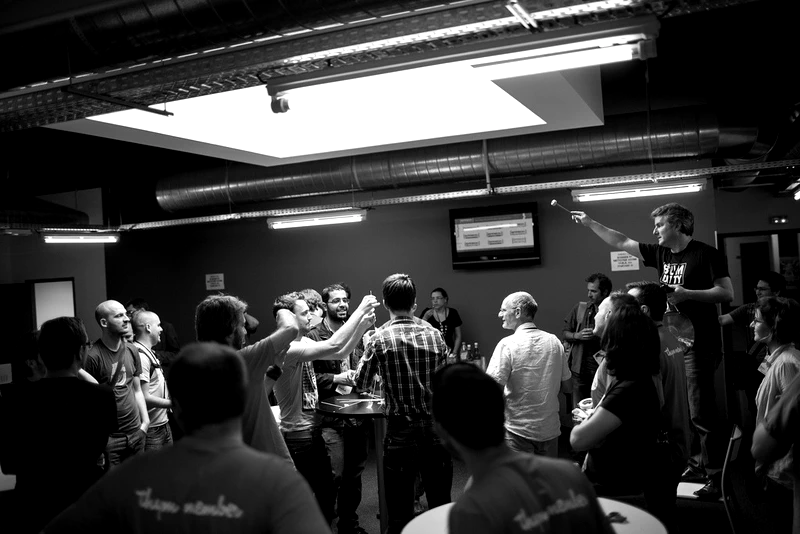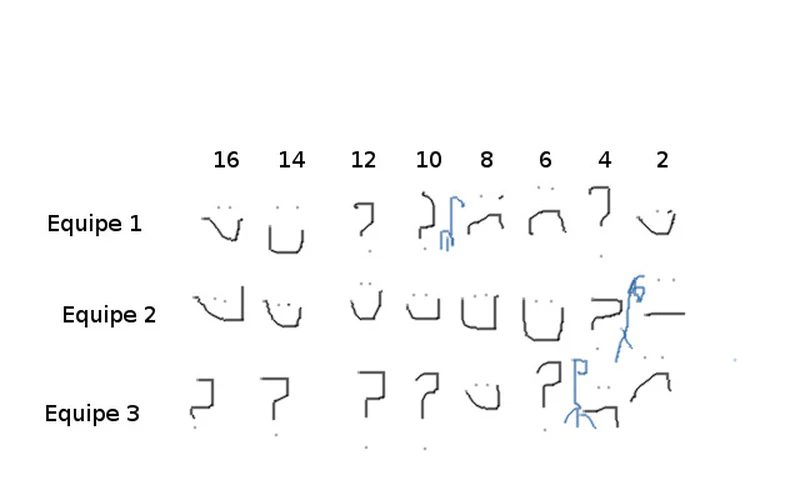Small trick for the marshmallow challenge that I’ve been using for over a year and that Anthony to whom I was able to show it tells me I should write a little something about (and that he uses it with success and pleasure).
Do not read if you don’t know the game.

To learn more about the marshmallow challenge:
- marshmallow challenge
- 2011 : Les enfants et le marshmallow challenge
- 2012 : Sudweb / Marshmallow Challenge
One of the key points of the marshmallow challenge is – unfortunately – the teams’ inability to have a real indicator of their value creation. To highlight this I’ve gotten into the habit of asking them every two minutes during the workshop for a status update on the project, with only three authorized answers: it’s going well (smiling smiley), we don’t know how the project is going (question mark), it’s going badly (frowning smiley). I, as the supposed big boss of the project, regularly ask them (every 2 minutes) to provide me with one and only one answer (but it can naturally vary during the 18 minutes of the challenge).
I take a piece of whiteboard and here’s what it can look like (naturally no participant pays attention to it):

I also indicate on the diagram at what point the team actually places the marshmallow on a structure, without help (without holding it with their hands).
Very often, like on line two, they tell me for a very long time that everything is going well. Here three-quarters of the time. Only to ultimately fail miserably. So I question the team: how could they have told me during three-quarters of the project that everything was going well? We’re at the opposite end of a method supposed to protect from failure or optimize value.
Two reasons are often invoked: the first is that we say everything is going well so that the big boss leaves us alone, but we don’t really know. Since it’s going well, he leaves us alone. Unfortunately we often observe this “in real life”. This is heading towards mishaps and disappointments: opt for transparency, be responsible. This is somewhat what happens on line 3, the team stays for quite a long time in a “we don’t know” mode. In “real life” this uncertainty (if it’s transparent) will be unbearable and will trigger actions.
The second, more terrible, is that we confuse time spent working with value creation, implying: “yes everything is going well, we’re working”. But we know you’re working! That’s not a question to ask, in a proper environment everyone wants to move forward, to work. But here the real question, the essential question is: “how is the project going: i.e. where is the value creation at”, and the accumulation of work hours is in no way an indicator of value creation. You could work very little and have a brilliant idea, just as you could work a lot only to throw everything away (as often happens in the marshmallow challenge).
The true indicator of the project’s status is to have, at regular intervals, a marshmallow that stands on its own.